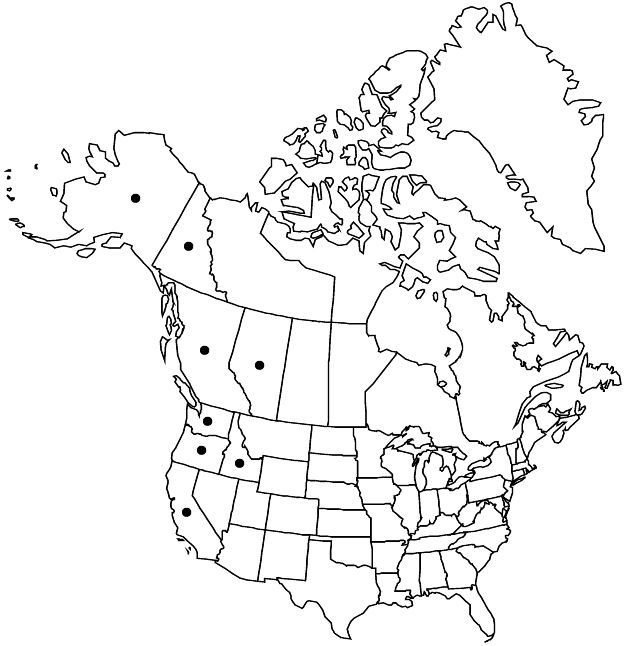Cornus unalaschkensis
Fl. Ross. 2: 378. 1844.
Stems erect, green, 6–22 cm, appressed-hairy; nodes 4–6, internodes progressively longer distally; branches only at distalmost node, much shorter than distal internodes so stems appear unbranched. Leaves at proximal 2–4 nodes nonchlorophyllous, opposite, ± scalelike, caducous (rarely chlorophyllous at 3d node from apex but much smaller than more distal leaves), at 2d node from apex nonchlorophyllous proximally, chlorophyllous distally, opposite, well developed, persistent, at distalmost node chlorophyllous, appearing to in whorl of 6, well developed, persistent; distalmost leaves much bigger than those at 2 more proximal nodes; petiole 0–3.4 mm; blade ovate to elliptic, 3.5–8 × 0.9–4 cm, apex acute or short acuminate, abaxial surface pale green, hairs sparsely appressed-hairy, adaxial surface green, appressed-hairy; secondary-veins 3 per side, all arising from proximal 1/2. Inflorescences 20–40-flowered; peduncle 13–30 mm; primary branches 0–2 mm; bracts greenish white or white, often red-tipped, unequal, 2 ovate, 21–30 × 12–13 mm, 2 suborbiculate, 17–1.9 × 13–16 mm, apex acuminate. Pedicels 0.4–1.6 mm, sparsely appressed-hairy or glabrous. Flowers: hypanthium cream to mottled purple, 1.2–2 mm, densely appressed-hairy; sepals mottled purple and cream, 0.1–0.4 mm, apex rounded or acute, thick, sparsely hairy on margin, densely glandular; petals cream proximally, purple distally, 1.5–1.8 mm, apical awn 0.4–0.6 mm; nectary dark purple or black. Drupes 10–20 per inflorescence, red, globose, 6–8 mm; stone globose or subglobose, 2.7–3.4 × 2.1–3.4 mm, longitudinally grooved, apex slightly pointed. 2n = 44.
Phenology: Flowering May–Aug; fruiting Aug–Oct.
Habitat: Maritime copse or heath, maritime coniferous forests and bog woodlands, moist broadleaf or coniferous forests.
Elevation: 0–3000 m.
Distribution

Alta., B.C., Yukon, Alaska, Calif., Idaho, Oreg., Wash.
Discussion
Selected References
None.